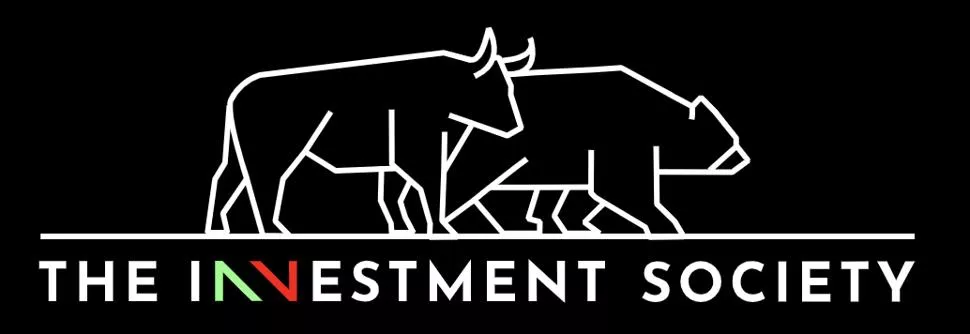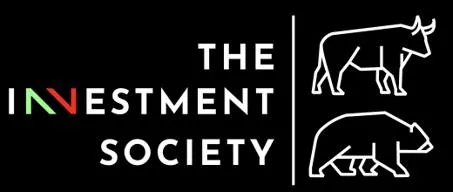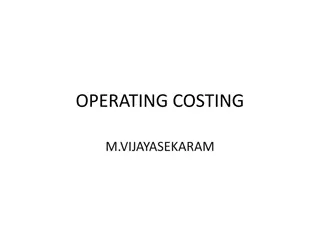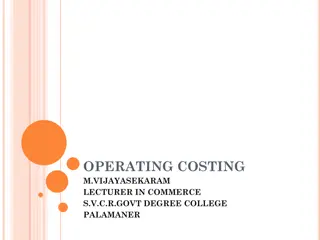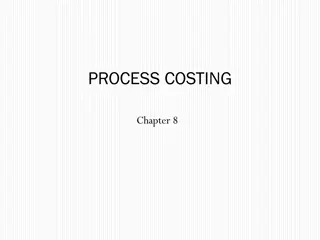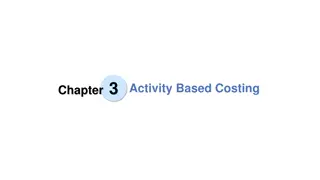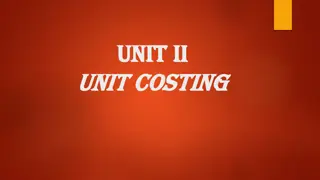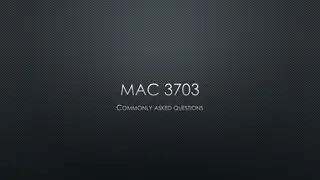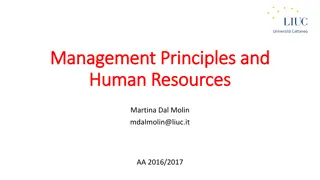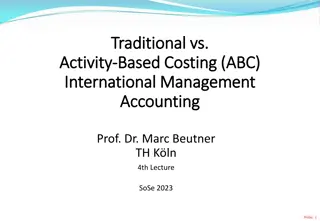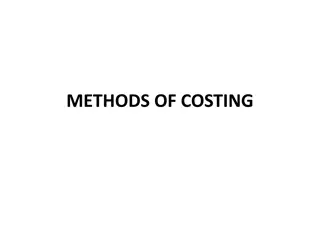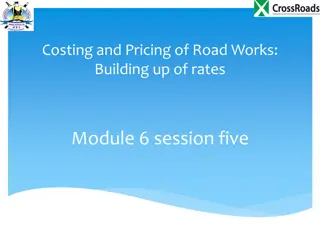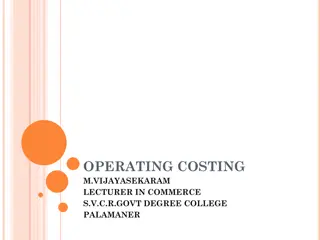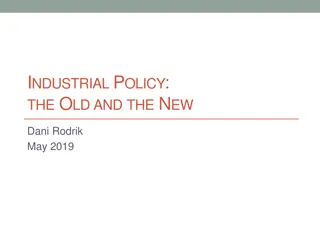Industrial Costing in a Nutshell
Delve into the realm of industrial costing through a comprehensive exploration of cost types, personnel costs, differentiation of costs, depreciation methods, and more. Unravel the intricacies of imputed costs, operating costs, and outlay costs. Gain insights into various kinds of depreciation, depreciation amounts, residual book value, and examples of linear depreciation. Enhance your understanding of key concepts essential for effective cost management.
Uploaded on Mar 02, 2025 | 0 Views
Download Presentation

Please find below an Image/Link to download the presentation.
The content on the website is provided AS IS for your information and personal use only. It may not be sold, licensed, or shared on other websites without obtaining consent from the author. Download presentation by click this link. If you encounter any issues during the download, it is possible that the publisher has removed the file from their server.
E N D
Presentation Transcript
ECON 105 TUTORIALS FINAL EXAM Wednesday June 7th 5 - 6pm in A5
OVERVIEW Multi Choice where to look, how to practice National Accounts, BOP Foreign Exchange Labour Market Money and Inflation AD/AS Model OCR news release Economic growth Government and Taxes
WAYS TO PRACTICE MULTI-CHOICE QUESTIONS Weekly quizzes all quizzes have re-opened until the day before the exam, you cannot make your grade worse by attempting them Past exams Past term tests Tutorials Economic history (lectures 3-5) can ONLY be multi-choice
BOP EXAMPLE QUESTION From 2015 S2 Exam
BOP EXAMPLE QUESTION CAB = - ROW Savings I = SP+ SG+ ROW Savings I = SNZ+ ROW Savings If the CAB is negative (deficit) then ROW Savings must be positive and NZ is borrowing money to fund investment. Domestic savings must be lower than investment.
FOREIGN EXCHANGE EXAMPLE QUESTION From 2018 S2 Exam
FOREIGN EXCHANGE EXAMPLE QUESTION PART 1: Use a supply and demand diagram to explain To buy NZ goods (exports): 1. Foreigners must first change their foreign currency into $NZ. 2. An increase in the demand for NZ oil will increase the demand for $NZD. 3. On our NZ money market market diagram, demand will shift out from D1 to D2. 4. The quantity of $NZD will increase and the exchange rate will increase.
FOREIGN EXCHANGE EXAMPLE QUESTION REMEMBER TO: Label the axes correctly (not P and Q) Refer to the shift in your answer State clearly the change in ER (from e1 to e2) Answer all parts of the question
FOREIGN EXCHANGE EXAMPLE QUESTION PART 2: Why do other industries refer to this as an oil curse ? The increase in the exchange rate (value of $NZ rise) makes other exports such as tourism and milk more expensive to overseas customers. These industries are therefore less competitive compared to overseas goods so might suffer.
LABOUR MARKET Likely to be in the multi-choice section
LABOUR MARKET Likely to be in the multi-choice section
MONEY AND INFLATION Using the inflation rate you calculated in the previous question follow the following formula: Real interest rate = nominal interest rate inflation ? = 5% - your inflation rate
AD/AS, MONETARY POLICY, INFLATION & UNEMPLOYMENT TRADE-OFF
AD/AS MODEL AD shifts if C,I,G,X or M change SAS shifts if wages or input costs change LRAS shifts if the economy s productivity changes with an increase in the quantity of scarce resources, such as inward migration or organic population growth, or improvements in the quality of resources, such as through better education and training Label the axes PL and Y
MONETARY POLICY RBNZ uses the Official Cash Rate (OCR) as a tool for Monetary Policy Tightening MP Raising the OCR Loosening MP Lowering the OCR Inflation can be influenced through 3 mechanisms 1. Interest rate 2. Exchange rate 3. Inflation expectations
MONETARY POLICY 1. C and I Lower interest rate = less costly to borrow so borrowers have more disposable income, less incentive to save money consumers have more to spend = firms have more incentive to borrow and invest C and I increase AD shifts right
MONETARY POLICY 2. X and M Lower interest rates lead to a lower exchange rate (less demand for NZD) = increases demand for NZ goods = makes inputs more expensive, raw material imports more expensive X rises and M falls (X-M) rises AD shifts right Inputs fall SAS shifts left but less than AD shifts
MONETARY POLICY 3. INFLATION EXPECTATIONS. PEOPLE MAKE DECISIONS BASED ON WHAT THEY EXPECT PRICES WILL BE IN THE FUTURE HIGH INFLATION EXPECTATIONS = WORKERS DEMAND WAGE INCREASES HIGHER WAGES SAS SHIFTS LEFT
RBNZ NEWS RELEASE global economic activity continues to weaken, easing demand for New Zealand goods and services... Use the AD/AS model to explain how business confidence is influencing the price level and level of real GDP.
RBNZ NEWS RELEASE In New Zealand, low interest rates and government spending will support a pick up in demand Use the AD/AS model to explain how the exchange rate is influencing the price level and level of real GDP.
RBNZ NEWS RELEASE Business investment is expected to rise given low interest rates and some capacity constraints Use the AD/AS model to explain how government spending is influencing the price level and level of real GDP.
RBNZ NEWS RELEASE Does the Reserve Bank expect inflation to rise or fall as a result of lowering interest rates? If the Reserve Bank did not cut interest rates, what would you expect to happen to inflation in the coming months? Employment remains around its maximum sustainable level. What does this mean with respect to Long Run equilibrium?
ECONOMIC GROWTH, INCOME & POVERTY
ECONOMIC GROWTH, INCOME & POVERTY Growth Poverty relative vs absolute (x% of income) Corruption, microfinance, property rights, access to roads and international markets Some marks are likely to be multi-choice
ECONOMIC GROWTH, INCOME & POVERTY The actual purpose of growing our economy is to improve the wellbeing and living standards of New Zealanders. GDP is not a measure of everything we value but it is highly correlated with things that we do such as falling poverty rates, child mortality declining, child labour declining and life expectancy improving. It doesn t take into account the distribution of income, products that are sold on the black market, quality of life, negative externalities or sustainability.
GOVERNMENT AND TAX Fiscal policy Taxes The Impossible Trinity The GFC and Great Depression Some marks are likely to be multi-choice
GOVERNMENT AND TAX A progressive tax regime is where marginal income tax rates rise with income. This means that higher income earners are taxed proportionally more than lower income earners. Example: $0 - $20,000 are taxed at 20% $20,001 - $40,000 are taxed at 33%
GOVERNMENT AND TAX Definition of fiscal drag: Fiscal drag means that taxpayers are dragged into a higher income tax bracket due to rising nominal wages. Link to inflation: Even if inflation is small then nominal wages will rise. Why does this disadvantage wage earners: The rise in nominal income is simply to keep in line with inflation (i.e. maintain real wages) but the increase in tax rate effectively reduces real wages.
GOVERNMENT AND TAX Make a valid suggestion (something that is reasonably possible) e.g. - index tax rates to inflation so that as inflation goes up, wage earners will not change tax brackets without an increase in real wages - remove progressivity in the scale so higher wage earners are no longer taxed more than lower wage earners
SIGN UP FOR FREE! STAY UPDATED FOR EVENTS Facebook Page: The Investment Society Instagram: the_investmentsociety QUESTIONS AND FEEDBACK Email: tutorials@ucinvestmentsociety.com


